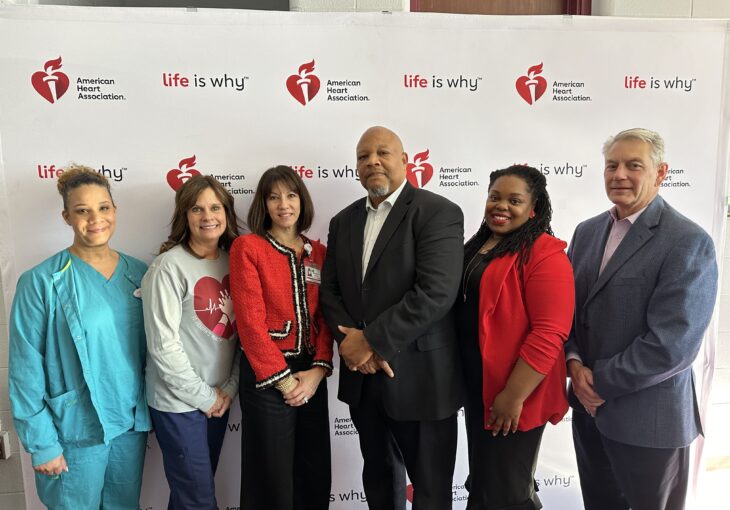Seven in 10 people in America say they feel powerless to act in the face of a cardiac emergency[1]. As a result, less than half of all people who need this lifesaving skill receive CPR from bystanders before professional help arrives[2]. Women and Black and Hispanic adults are also less likely to receive that lifesaving help. CPR, especially if performed immediately, could double or triple a cardiac arrest victim’s chance of survival[3].
That is why the American Heart Association, the worldwide leader in resuscitation science and education, and St. Joseph’s Health are adding lifesavers to the chain of survival by providing CPR training and resources to the Dunbar Center

Brian Howard, American Heart Association advisory board chairperson in Syracuse, speaks during a news conference announcing the new program
On Monday, the Association, along with sponsor St. Joseph’s Health, announced a new program to help prepare for cardiac emergencies at the Dunbar Center. Thanks to a grant from St. Joseph’s Health, the Dunbar Center will receive an automated external defibrillator (AED) and full CPR training courses for three employees.
“A cardiac emergency can happen anywhere, and as ‘the’ heart hospital in the region, we want the staff at the Dunbar Center to be prepared,” said Meredith Price, president of St. Joseph’s Health Hospital. “This lifesaving device and training will equip them with the skills and confidence needed to handle emergency situations swiftly and efficiently. We are thrilled to work with the American Heart Association on this initiative to make the Dunbar Center a safer place.”
“The Dunbar Center has been serving Syracuse’s Black community for more than a century,” said Andre Harper, executive director of the Dunbar Association. “We serve all ages, from youths to seniors. We know cardiac arrest can happen at any age. This AED and training will help ensure we are prepared to act in an emergency.”
The American Heart Association will also work with the Dunbar Center to create a Cardiac Emergency Response Plan (CERP) for the center. A CERP is a coordinated, practiced response plan that establishes specific steps to reduce death from cardiac arrest. A carefully orchestrated response to cardiac emergencies will help reduce deaths and ensure that chaos does not lead to a lack of response or an improper response.
“Preparation is key to saving lives,” said Brain Howard, chairperson of the American Heart Association, Greater Syracuse advisory board. “Implementing a Cardiac Emergency Response Plan – like what’s happening here at the Dunbar Center – can increase survival rates from cardiac arrest by 50% or more by enabling a trained lay-responder team to take action.”

Demonstrating Hands-Only CPR and AED use
You can find more information on Cardiac Emergency Response Plans, as well as downloadable checklists, on the American Heart Association’s website.
The American Heart Association has a goal to double the survival rate of cardiac arrest by 2023. Placing more AEDs in communities and implementing more CERPs will help create a Nation of Lifesavers.
[1] 2021 Hands-Only CPR perceptions survey, conducted for AHA https://newsroom.heart.org/news/new-survey-only-6-out-of-10-adults-feel-comfortable-taking-charge-and-giving-cpr
[2] Heart Disease and Stroke Statistics—2022 Update: A Report From the American Heart Association, Table 19-2 https://www.ahajournals.org/doi/epub/10.1161/CIR.0000000000001052
[3] https://www.ahajournals.org/doi/10.1161/CIR.0000000000001052?utm_campaign=2023stat-update&utm_source=heart&utm_medium=link&utm_content=statshome
